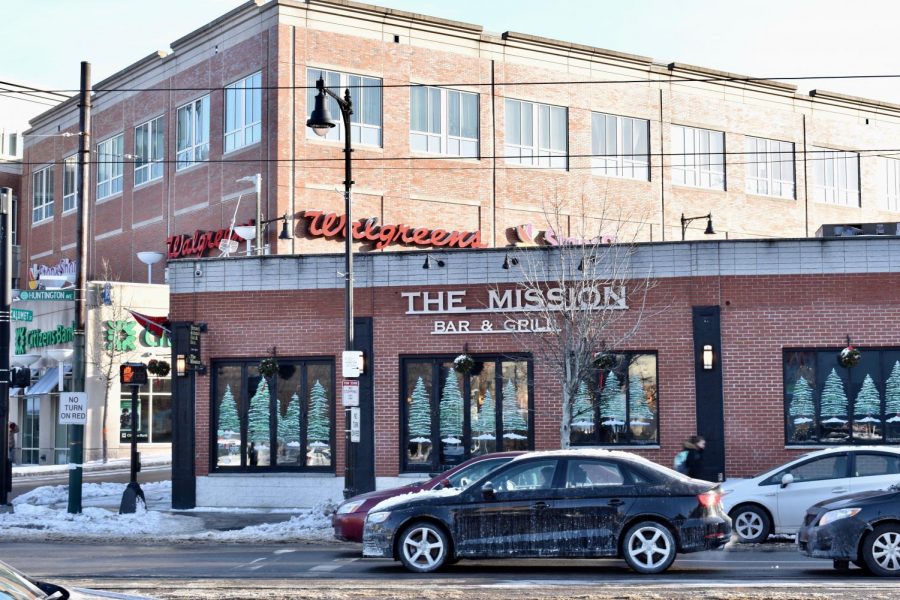Boston restaurants face rising cost pressures
Establishments like The Mission Bar and Grill in Roxbury have had to adapt to rising costs in order to keep their doors open.
January 23, 2019
After nearly 200 years of service, Faneuil Hall’s iconic Durgin-Park restaurant closed its doors for good Jan. 12 after management announced the decision just a week earlier.
The news is the latest in a string of citywide restaurant closings, one of five in the past month, including spots from Back Bay to Cambridge. Not all of the recent closings include establishments with the same lifespan as Durgin-Park, however, as restaurants like Cultivar closed after just over a year in business.
Durgin-Park, known for its traditional New England-style food and surly service, closed in light of what restaurant manager Kenneth Thimothee said were “financial reasons including an increased minimum wage,” as reported by The Boston Globe.
The current discussion of the factors that are ultimately responsible for a restaurant’s demise or its success has yet to lead to any one particular business model for the future of Boston’s dining industry. What is clear, however, is that some of the challenges Durgin-Park and others faced in their last days are also ongoing problems for local restaurants.
In the face of an ever-changing cultural landscape accompanied by skyrocketing rent, rising food costs and growing competition, how do local establishments plan to survive and prosper in the industry?
“I think as a restaurateur you need to know the demographic you’re going into before you even open up the place,” said Zach Semeta, a 32-year-old restaurant manager at The Mission Bar and Grill, a spot wedged on the corner of Huntington Avenue and Tremont Street. “You really have to know your price points … It’s really important to be aware of all the things that go into a restaurant: your costs [and] your labor.”
High rent costs, something Semeta said may have been the final nail in the coffin for Durgin-Park, seem to be a concern shared by others in the business.
“It’s the rent,” said John O’Brien, a bartender of seven years at The Mission, regarding what he says is the driving force behind many of the closures. “It’s expensive … even around here … I have a son who lives nearby, it’s not cheap,” O’Brien said.
Mission Hill is no stranger to closures, as places like Grub, the sister restaurant to Huntington Avenue’s Penguin Pizza, closed in Oct. 2017.
The conversation surrounding Boston’s restaurant scene also involves the minimum wage, a piece of the puzzle Semeta observes could be problematic for restaurants come 2023, when Massachusetts is set to raise the standard minimum wage to $15 an hour, and to $6.75 for the tipped minimum wage.
“It’s tough … As a restaurant, you lock yourself into leases with the landlord for 10 to 15 years, so [when] 15 years expires, [the landlord’s] going to hike it up by 15 to 20 percent, plus your minimum wage has just gone up,” Semeta said.
Richard Guthria, a manager of 23 years at Woody’s Grill and Tap, voiced similar concerns about the industry in the Fenway neighborhood. Woody’s, located on Hemenway Street, has witnessed a shift in its demographic of both guests and workers.
Guthria said some of his guests and workers have come and gone as a result of the rising property value in the area. “I pay three times the amount for the same square footage [as] across the street, because I’m commercially zoned,” he said.
Not only is it becoming more expensive to pay the rent as a manager of a restaurant, Guthria said, but it is also becoming too expensive for potential customers to move into the neighborhood, which he believes is detrimental to a neighborhood’s self-sustainability.
“You need affordable housing for clients and labor, and I’d go as far as to say a tax abatement [from the city] for small businesses,” Guthria said.
Guthria said he doesn’t think minimum wage is a driving force of restaurant closures, but that there should be some degree of distinction in pay for long-time staff members as opposed to new, entry-level workers. Guthria said the $15 minimum wage is a “very fair starting point” for “quality workers” who carry out their duties.
Another industry change is the advent of mobile delivery services like Uber Eats and Grubhub. Those who work on the delivery side of the operation can take as much as 25 to 30 percent of the meal’s sale, something both Semeta and Guthria noted as a hurdle for profit.
While establishments like The Mission and Woody’s have adapted to the change by becoming more involved in takeout services, restaurateurs said it’s harmful to both the manager and the customer to opt for delivery in place of the sit-down experience due to a smaller profit on the restaurant’s end and a degraded food product on the customer’s end.
To ensure that favorite restaurants and cafés survive the coming years in the face of a constantly-changing service economy, Semeta and Guthria encourage people to take the time to visit and return to places they enjoy.
“I myself, I go out once a week, every Tuesday, I go out to a different restaurant,” Semata said. “I definitely think there’s still that niche that people want to experience, to go out to celebrate, or just a date, or whatever.”
Similarly, Guthria spoke fondly of the shared experiences he witnessed in Woody’s over the course of his two decades there.
“It was a rite of passage, to become a part of the community,” he said. “Northeastern kids have been coming in now for more than 20 years, we’ve had a crowd for the Beanpot every year.”












